Fixed Mindset vs Growth Mindset: How To Shift To A Path Of Learning And Growth
How do you approach failures in life?
Yes, failures can be painful. But does it define you and prevent you from learning from your mistakes or does it serve as a powerful mechanism to embrace new challenges.
Our mind plays a very powerful role in what we believe and how we think. What we think about ourselves and our abilities decides how we act and lead our life.
When you look at successful people or those who have achieved mastery in life, what do you tell yourself – they are more gifted than others, they have talent, their innate abilities made them successful or do you believe success comes from hard work, developing new strategies, drawing inspiration from others, getting good mentoring, investing in learning and through constant improvement.
What you believe is what you achieve. Conscious or unconscious, how you choose to interpret your experiences can set the boundaries on what you can accomplish.
There’s power in believing that you can improve and accomplish what you set out to achieve by looking at failures and setbacks as a medium for growth. It’s being resilient in the face of challenging circumstances with unintended consequences.
So, how do we shift ourselves from being limited by our abilities and intelligence to finding freedom in building them. How do we commit to a path of learning and growth?
Before we can enable this switch, it’s important to understand the concept of 2 types of mindsets developed by Carol Dweck, researcher at Stanford University – Fixed mindset vs Growth mindset.
2 mindsets: Difference between fixed mindset vs growth mindset

A person with a fixed mindset is constrained by their beliefs and thoughts. They believe people are born with special talents and every person has different abilities and intelligence that cannot get better with time, persistence and effort.
They think of failures as a validation of their lack of intelligence and their limited abilities that prevents them from achieving their goals. They give up easily with the fear of failure and a belief that they cannot improve.
A person with a growth mindset finds freedom in their thoughts and beliefs. They understand that certain people have special talents and that intelligence varies from person to person, but it’s also something that can be developed and increased with effort and hard work.
They take joy in the learning process that comes from seeking new information, forming new strategies, and taking inspiration from others. They embrace difficulties and challenges as a means to develop new skills and grow.
Some of the key differences between fixed mindset vs growth mindset are:
Fixed mindset is limiting
- Talents, abilities and intelligence is fixed, it’s who we are
- Run from error, do not engage with it with a desire to look smart
- Avoid challenges
- Give up easily
- Feel threatened by the success of others
- Ignore negative feedback even though it may be highly relevant and useful
- Avoid new experiences with fear of failure
- Look for people who can reinforce their self esteem
- Focus on the outcome since they consider results as their identity
- Can lead to cheating and deception
Growth mindset is freedom
- Talents, abilities and intelligence can be developed through effort and practice
- Engage deeply and process the error with a desire to correct the error
- Embrace challenges
- Persevere in the face of failures and setbacks
- Find inspiration in others success
- Accept criticism as a way to learn
- Embrace novelty with a desire to master new skills
- Look for people who challenge them to grow
- Focus on the process and learning without worrying about the outcome
- Leads to collaboration and innovation
In her book Mindset, Carol Dweck beautifully sums up the 2 types of mindsets
When you enter a mindset, you enter a new world. In one world—the world of fixed traits—success is about proving you’re smart or talented. Validating yourself. In the other—the world of changing qualities—it’s about stretching yourself to learn something new. Developing yourself. In one world, failure is about having a setback. Getting a bad grade. Losing a tournament. Getting fired. Getting rejected. It means you’re not smart or talented. In the other world, failure is about not growing. Not reaching for the things you value. It means you’re not fulfilling your potential. In one world, effort is a bad thing. It, like failure, means you’re not smart or talented. If you were, you wouldn’t need effort. In the other world, effort is what makes you smart or talented. You have a choice. Mindsets are just beliefs. They’re powerful beliefs, but they’re just something in your mind, and you can change your mind
Get your FREE copy of the 30 Day Growth Mindset Challenge at the end of this article
Disadvantages of a fixed mindset
Kids start showing signs of either a fixed mindset or growth mindset from an early age.
Do they worry about getting the best scores, look for constant validation of their ideas, refuse to put in more effort or are scared to try hard problems with the fear that they might fail? That’s a fixed mindset.
This mindset refrains them from developing new skills, exploring new solutions, devising new strategies and most important of all dreaming bigger.
They will be quick to label their struggle with a particular subject as “I am simply not good at it. I can’t get better even if I try”. Instead of putting in their best effort to cope up with challenge and difficulty, they will simply give in to self-doubt.
If we raise a generation of such kids, we can hardly have hopes of a better future.
In the workplace, fixed mindset shows up when we avoid constructive conflicts, stick to existing solutions even when there’s a need to try new ideas, do not speak up with the fear we might sound stupid, refuse to take up a new challenge with uncharted territory, blame others for not meeting our goals or feel jealous of others success and growth.
It can make us lead from fear, show reluctance in making hard decisions, avoid responsibility and cripple innovation and collaboration. Without learning skills essential for growth and development, we can only dream of success without ever realising it.
As evident, a growth mindset gives us hope to learn and create a better future for ourselves. So, how can we enable this shift?
5 effective strategies to shift fixed mindset to a growth mindset

A common misconception about growth mindset is that being open minded and flexible qualifies as being growth minded. These are important qualities to have, but they themselves do not make someone growth minded.
It’s also not possible to apply a growth mindset all the time. During challenging circumstances or when dealing with a feeling of insecurity, we may get defensive and adopt a fixed mindset to deal with the conflict.
We all have different triggers that can activate a fixed mindset. The critical thing is to recognise important situations which can set off a fixed mindset and learn to switch to a growth mindset.
Shift from self doubt to potential for growth, from worrying about the outcomes to taking interest in the process, acting as a victim in the drama triangle to adopting a role of a creator by taking responsibility and from fear of failures to learning through them.
Apply these 5 effective strategies to develop a growth mindset:
1. Choose to tell yourself a different story
There’s a lot of power in the story we tell ourselves. What do you tell yourself – do you have a choice, are you smart enough to learn new things, do you feel challenges lift you up or bring you down?
When we come across hard problems or difficult situations, how we interpret and react to them is based on our own story. Our actions are nothing but a manifestation of our beliefs.
So, the first step to enable a growth mindset is to learn to catch yourself in the moment, make a choice and shift the language you use.
Instead of telling yourself,
- I am not good at it
- I can’t do it
- I do not have the ability to learn
- It’s better to stick to what I know
- I give up because it’s beyond me
- I have fixed potential
- This is frustrating
- I am who I am
- This is hard
Choose to say,
- I can do better
- I can do it
- I want to try and not give up
- I want to explore new ideas
- I believe in myself
- It’s possible only if I try
- It’s ok to fail
- I can learn from my mistakes
- I just don’t know yet
2. Set learning goals as opposed to performance goals
Commit to learning everyday as opposed to seeking goals that prove your worth. For example, instead of setting a goal to lose 30 kgs, commit to eating healthy everyday. Instead of trying to score A on maths, commit to practicing maths everyday. Instead of the goal of being a professional runner, commit to running everyday.
Focusing on the process as opposed to the outcome helps us look for small continuous improvements that add up over a period of time. By shifting to learning, we can consciously choose a path in which hard work, effort, deliberate practice and persistence will be the key to success.
Success doesn’t come in a day. It’s a result of years of hard work in which learning never ends.
Daily Weekly Monthly Planner Worksheets
Manage your to-do list, stay productive and cultivate healthy life habits with these planners.
3. Capitalise on your failures
Failures teach us what success can’t. Instead of running away from failures and giving up when faced with a setback, you can take advantage of your failures by reviewing them, identifying what did not work and then devising a plan to correct your mistakes.
Apply multiple mental models like inversion principle and second order thinking to develop new strategies, seek help from others to review your decisions and commit to getting better with every defeat.
Once you set your mind to look at failures as a means to learn and grow instead of considering them as a limitation of your abilities, you will be able to capitalise on them.
4. Choose Goldilocks tasks for continuous improvement
There’s a difference between seeking challenges and setting out to do what’s impractical. If you try to climb a mountain without building physical strength, solve trigonometry without learning algebra and geometry, there’s no way you can succeed.
Goldilocks tasks are activities that are neither too easy nor too difficult, just a little over your current abilities. They provide a perfect opportunity to step outside your comfort zone without leading to anxiety.
By investing in Goldilocks tasks, you can set up a path for continuous improvement by slowly building upon your current abilities.
Implementation Intentions Worksheet
Develop an action plan to avoid distractions, stay on track and achieve your goals with this template.
5. Be consistent and flexible
You cannot shift from fixed mindset to a growth mindset in a day. Much like other things, it requires practice.
Be consistent in reflecting on your past behaviour by asking yourself some of these questions
- How did you act last time
- Did you choose a fixed or a growth mindset
- What made you choose one mindset over the other
- Is there a pattern in events that makes you adopt a fixed mindset
- Why did you fail to recognise fixed mindset in the moment
By asking yourself these questions on a regular basis and being flexible to learn from them, you can identify your fixed mindset trigger points and develop new strategies to adopt a growth mindset.
Remember, all human beings are unique. What works for one, may not work for the other. Without being consistent and flexible in your own approach, you cannot develop a growth mindset.
How can you promote a growth mindset?

While teaching a growth mindset can start at an early age, it’s never too late to learn it. Our brain is highly adaptable to new ideas and new ways of doing things.
When we push ourselves out of our comfort zone, we give permission to our brain to form new connections. With practice, these connections get stronger and what seemed like an effort at first, may soon be trivial.
To promote a growth mindset for kids or adults, follow these key practices:
- Do not praise intelligence. Their intelligence and current abilities cannot be a sign of what they can and can’t do.
- Recognise and appreciate process, engagement, strategies, perseverance, effort and progress. These are strong indicators of their desire to learn and grow
- Do not engage in false praise. Effort that leads to no progress should not be praised. Disappointment should lead to a burning desire to do better. It should be a signal to try a different strategy
- Establish vulnerability not as a sign of weakness, but a powerful mechanism to realise their full potential
- Encourage them to make the right choice of words e.g. shift from “I don’t know” to “I don’t know yet”. Simply believing that they can do it will open up their mind to seek solutions that did not seem possible earlier
- Provide them with Goldilocks tasks just above their current abilities to enable them to realise benefits of hard work and consistent effort
The most important step to promote a growth mindset is to make people realise its many benefits. Carol Dweck describes this very well in her book Mindset
The belief that cherished qualities can be developed creates a passion for learning. Why waste time proving over and over how great you are, when you could be getting better? Why hide deficiencies instead of overcoming them? Why look for friends or partners who will just shore up your self-esteem instead of ones who will also challenge you to grow? And why seek out the tried and true, instead of experiences that will stretch you? The passion for stretching yourself and sticking to it, even (or especially) when it’s not going well, is the hallmark of the growth mindset. This is the mindset that allows people to thrive during some of the most challenging times in their lives
Recommended Reading
30 day growth mindset challenge
Growth mindset challenge will enable you to find patterns of thinking that invokes a fixed mindset and guide you to shift to a growth mindset. This PDF contains a growth mindset worksheet with 3 additional reference sheets and detailed instructions to champion a growth mindset.

SIGN UP TO GET ACCESS
Upgrade Your Mindset
Enjoyed reading this article? If you are looking for practical strategies and tools to build a growth mindset for life that leads to greater achievement and personal growth, my book Upgrade Your Mindset will serve as an excellent guide.
The book draws on knowledge and research from neuroscience, psychology, and many other fields that have been around for many years and connects them together in ways that are easy to understand and apply in real life.
When you buy the book, you will also get access to 19 downloadable and printable worksheets to practice the strategies in the book and easily apply them to your daily work and life. Written as a how-to guide and a personal workbook, you’ll be able to put these ideas into practice in real life by establishing a deeper understanding of how mindset works and learn to build a growth mindset in a methodical and systematic way with practical exercises.
Growth mindset video series
Examples of fixed vs growth mindset
Let us take a few examples to understand the effect of 2 types of mindsets in different situations at work.
Example 1: Feedback as an attack on your personality or a means to improve your abilities
When faced with constructive feedback at work, how we choose to interpret the feedback plays a large role in how we decide to act on it.
In a fixed mindset, this feedback can serve as a limitation of our abilities, an attack on our intelligence, a message about the unworthiness of our position or a confirmation of our lack of skills to do well in our role. By considering it as an attack on our identity “who we are”, we refrain ourselves from learning the true intent of the message and identifying ways to correct it. Instead of devising an improvement plan to make things better, we let this mindset consume us leading to inaction.
In a growth mindset, this feedback can hurt, but it does not define us. It inspires us to dive deep into the problem areas, engage in understanding the conflict and collaborate in finding solutions to be better in our work and our role. With the intent to learn from the feedback and the belief that we can improve, we take responsibility for our own learning and growth.
Example 2: A complex new project as a setup for failure or a chance to expand your knowledge
Given a chance to lead a new project with multiple unknowns, hard timelines or complex requirements, our mindset can determine how we approach the challenge.
In a fixed mindset, the fear of failure will prevent us from taking on the challenge. The worry that we are not capable of handling the unknowns, others will view our extra effort as a lack of our abilities and question our smartness if we fail will make us give up the project even without trying. Self doubt about our own capabilities and the belief that we cannot learn can kick-off imposter syndrome further validating our thoughts that we are not fit for the project.
A person with a growth mindset will think of this project as an opportunity to build new skills. Since they consider hard work, effort and perseverance as important qualities, they will not shy away from putting in their best foot forward to make the project successful. Instead of hiding behind their failures, they will take responsibility and accept their mistakes as a means to do better.
Example3: New technology as a risk to your current product or a chance to provide better service to customers
Our mindset plays an important role in determining how we adopt a new technology which is relevant to our products.
A person with a fixed mindset will view a new technology as a risk to their current product. They will worry about how it can make their product irrelevant, but at the same time will be scared to try it out. By sticking to existing solutions instead of exploring new ideas, they will set up their company for failure in the long run.
A growth minded person will embrace new technology as a means to provide better service to their customers. They will carefully evaluate the risks of the new technology and craft a plan to integrate it while learning about its unique challenges along the way. Instead of worrying about failures, they will think of its benefits to keep pushing forward.
While I can give countless examples of fixed mindset and growth mindset as they are a big part of our life, I hope you get the idea to catch your own mindset in action.
In summary, a fixed mindset pulls us back and prevents us from realising our full potential while a growth mindset makes us explore without being afraid of the challenges ahead. It’s a choice. Which mindset do you choose? Write to me or share your thoughts in the comments below.


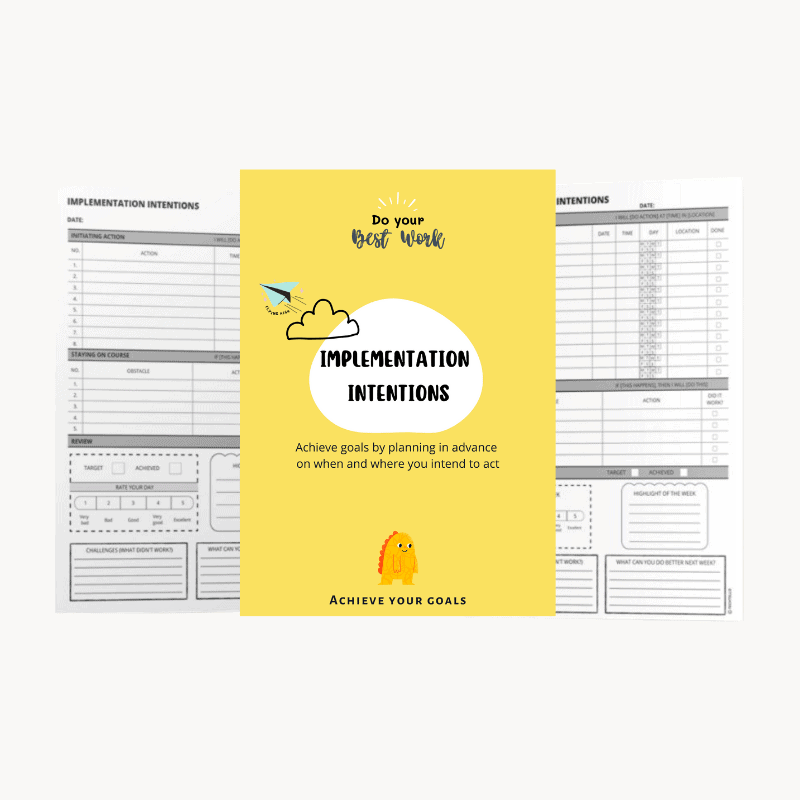






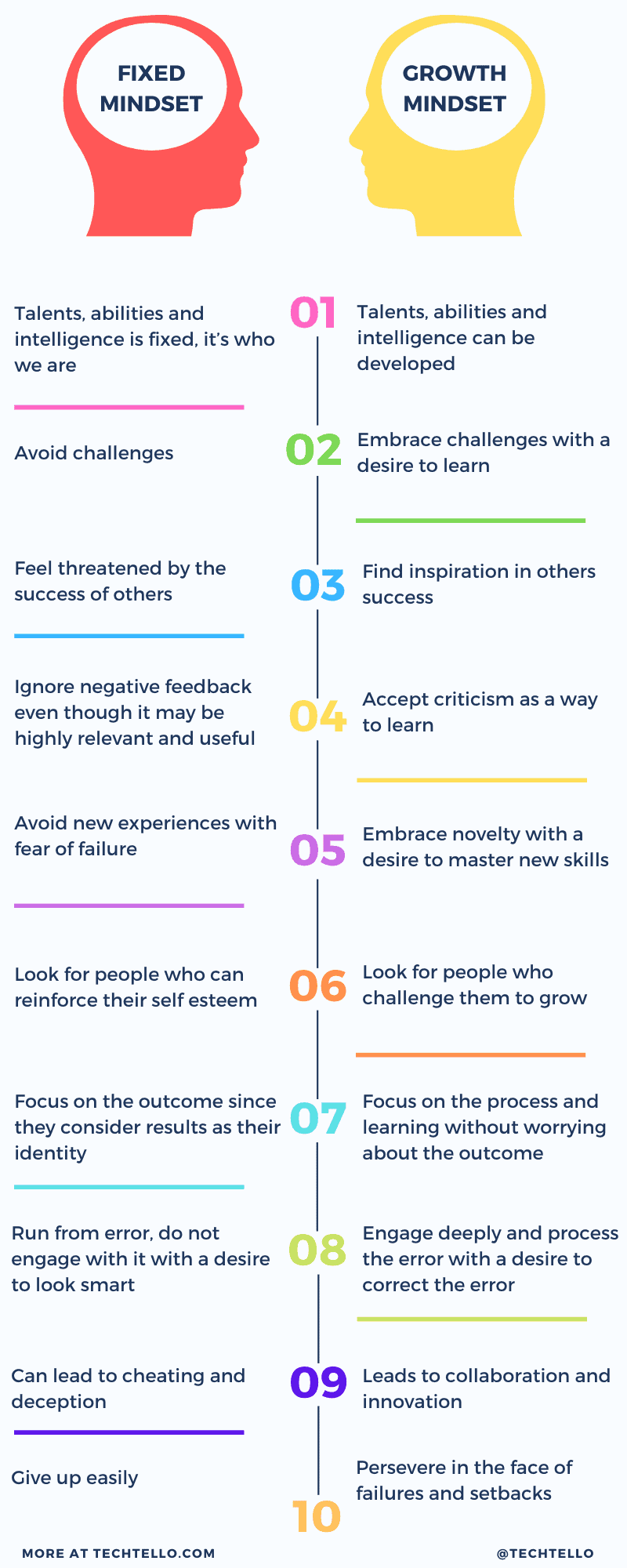








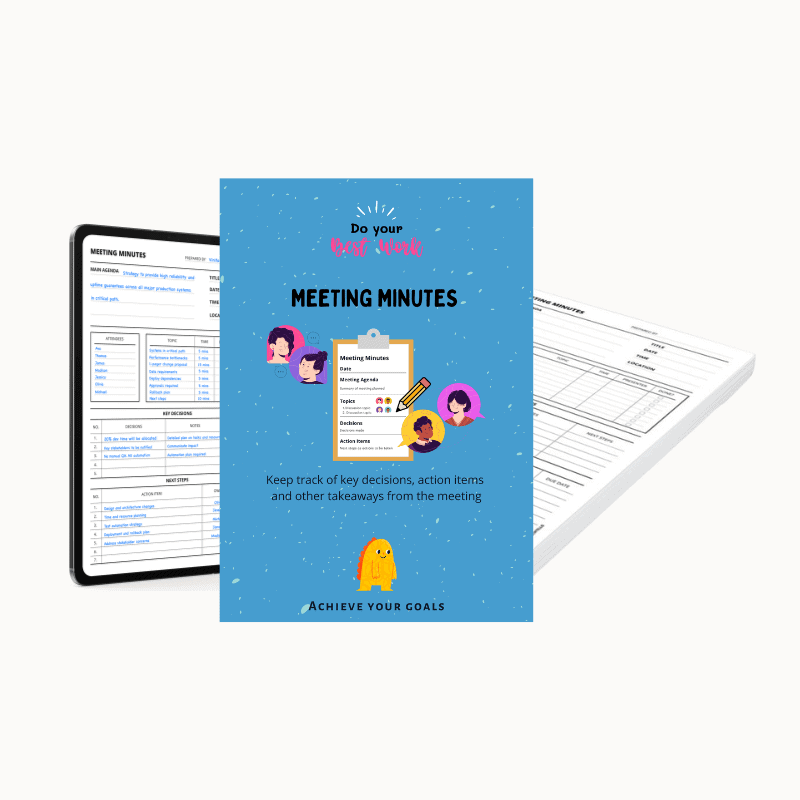
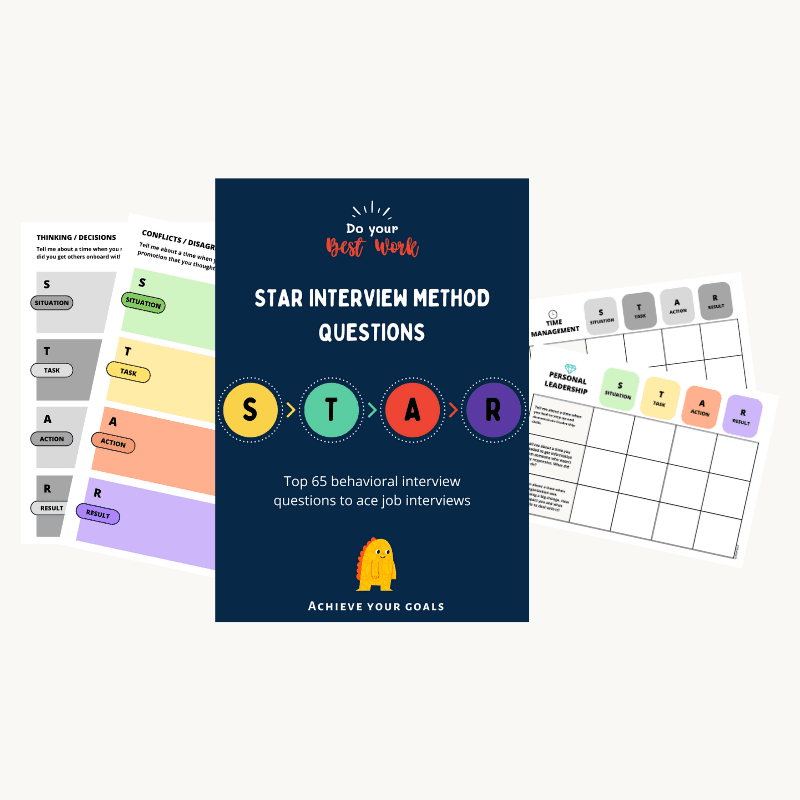





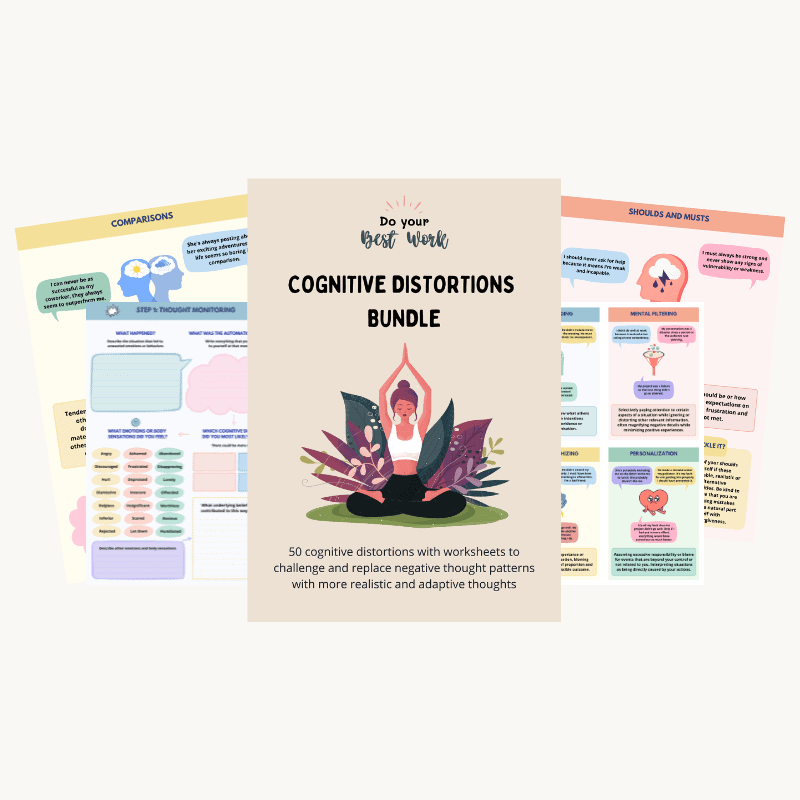
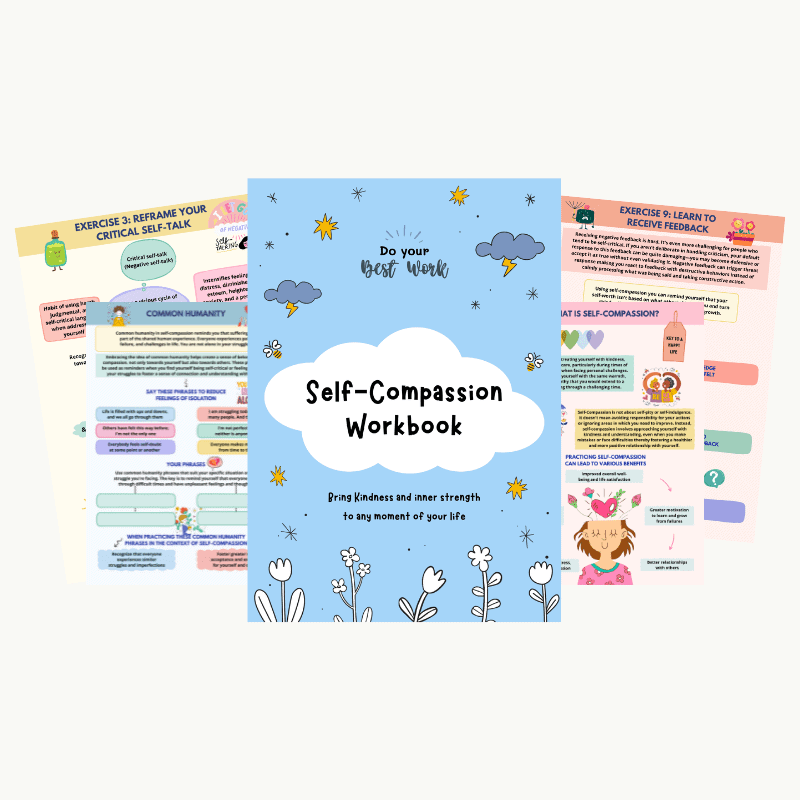



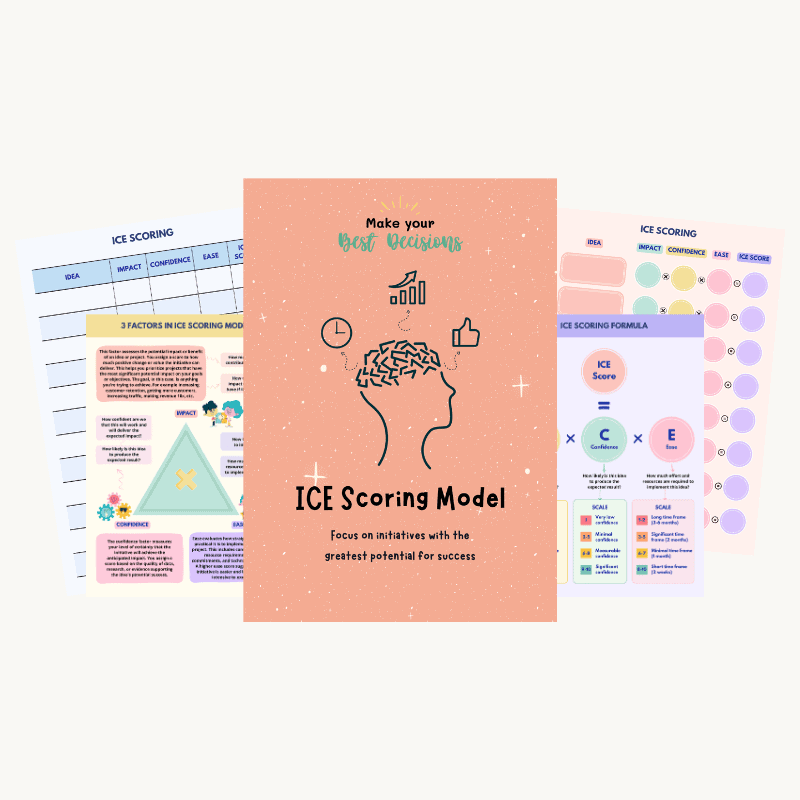







I had never thought about Mind set, I can see where at times I have had a Fixed Mind, But I will form know on catch myself in this mind set and change it into the Growth Mindset. It make sense . Thanks
So great to know that Araceli. If we can catch ourselves in a fixed mindset, we can make an effort to think differently and try to find ways to be better in our lives and around others. All the best.
I thoroughly enjoyed this article and got a lot out of it. Thank you!
Hi Laurie,
I am so glad to know that you liked this article. I hope you will take the time to help others learn about these mindsets and create a positive change in their life. Wish you all the best.
Thanks,
Vinita
Nothing is impossible for a determined mind. great read
Completely agree with you Clarice. Attitude of learning sets us free.
Best of luck,
Vinita
I am a firm believer in the power of a growth mindset over a fixed one. I have seen a huge difference in students’ performance when they change from negative to positive self-talk regarding their abilities.
So true Sherry. I have myself seen a huge positive effect of growth mindset in my daughter.
You seem to be doing some great work in encouraging this mindset in your students. I wish you all the best!!
Thanks,
Vinita
Attitude is key. Growth mindset is the best for opening doors.
Absolutely David. Well said!!
I love this!
Thanks Christie!!
This is Great!
Thanks Rocio!!
Your article is wonderful,i am working on a few series on personal growth for teachers and i have taken your 5 effective steps on changing mindsets ,i hope i can use them.
Absolutely Sabina. It will be great to see others adopting these practices and exercising their growth mindset.
All the best,
Vinita
This article was very helpful, I learned so much, I was able to detect a lot of signs of fix and Growth mindset. not only I’ll be applying the techniques I learned today on myself but also my kids.
Thank you Santina. You will notice a significant change in yourself and around you once you start applying these practices. Wish you all the best!!
– Vinita
Thank you for such a useful writting. Really good and comprehensable.
Thank you Yasir
So informative ,am learning today and always be busy with the articles.
Thanks so much for being generous with knowledge!
Thank you Gatdeni
Why so I make things harder than they have to be?
Thank you very much for your article! Your information has reminded me how I don’t have to make things harder than they have to be. I particularly like the strategies you offer to develop a growth mindset. I have bookmarked this page and plan to go back to it when I experience a struggle.
All the best Aloida. Keep practicing these strategies and you will notice a lot of positive difference in your life.
This is a wonderful knowledge sharing. Thank you very much for writing this helpful article.
I’ve just realized that adopting one of the mindsets will empower the entire life. I’ve learned a lots today and I’ll be applying your recommended 5 effective strategies to develop my existing mindset.
Thanks once again for the article.
Blessings,
Thank you Ringsey Keo. By applying these practices on a consistent basis, you will make add tremendous value to your own life and to the people around you.
All the best,
Vinita
You can agree or not, anyway worth thinking over. And I personally appreciate the way it is written. Clear yet inspiring. Thanks!
Thanks Olgierd. I hope you take the time to put these strategies to practice.
I never thought about minds and I. This article was very educational. It was very well written and explained very well.
thank you.